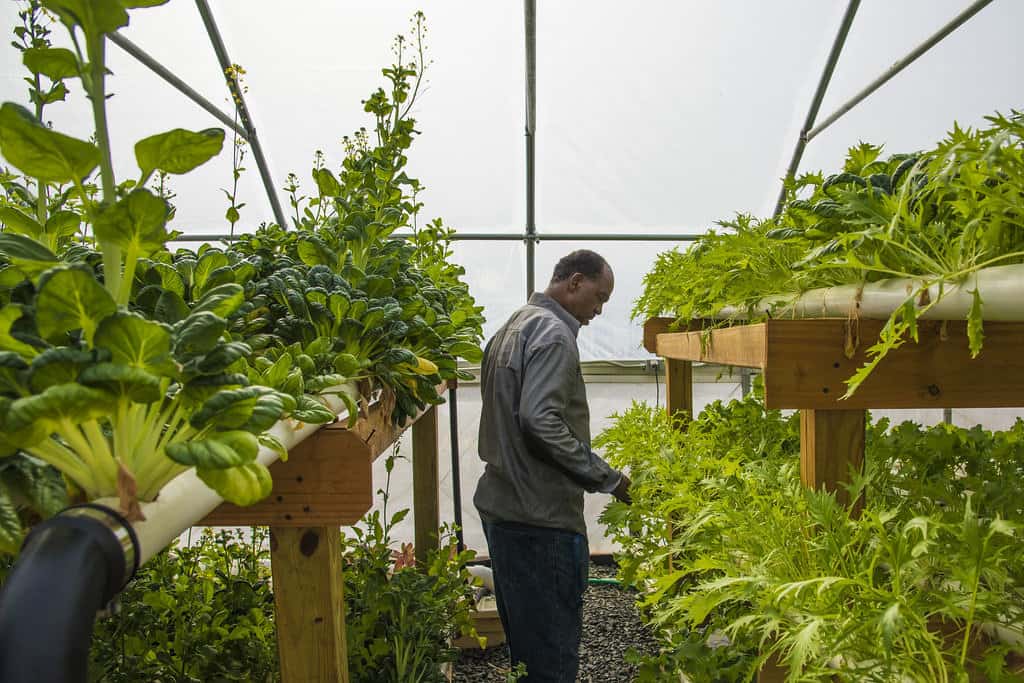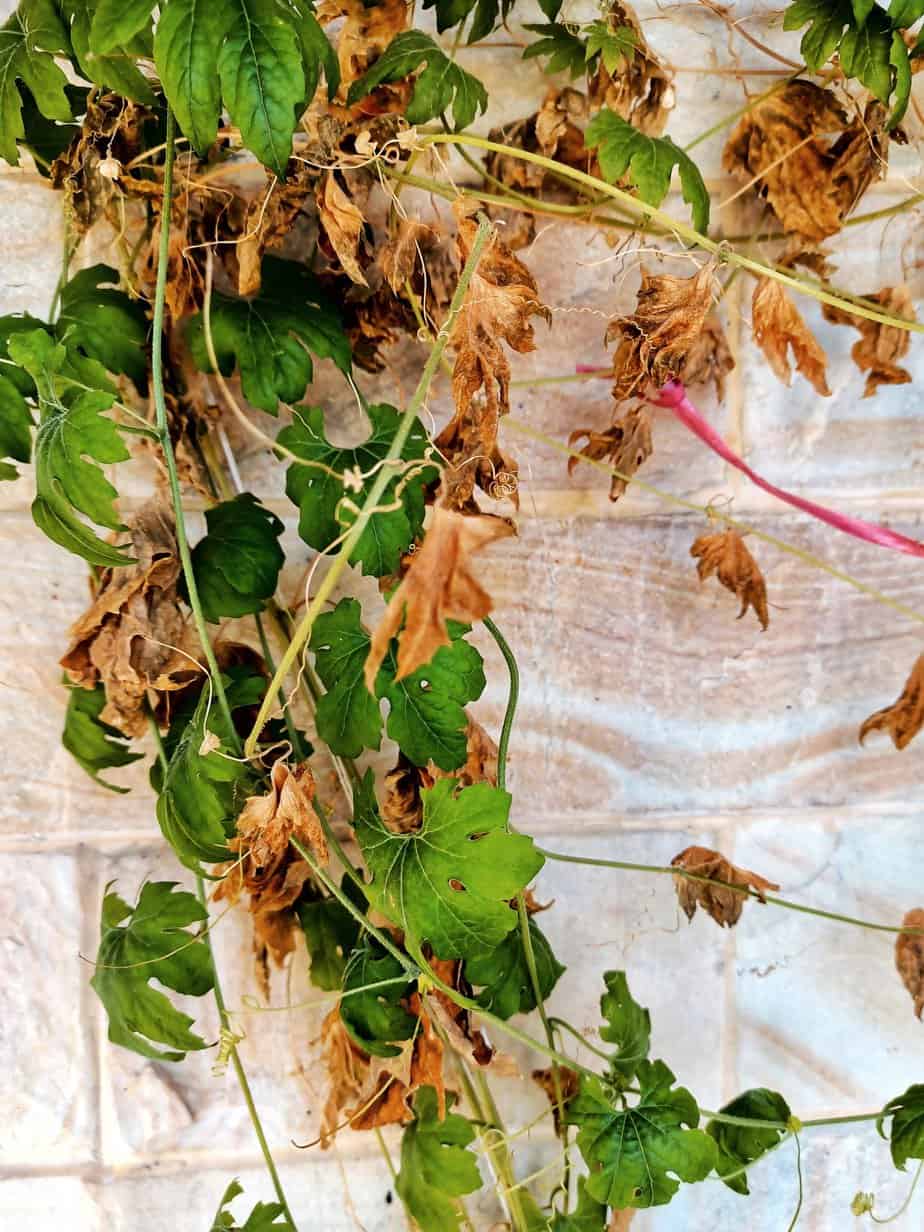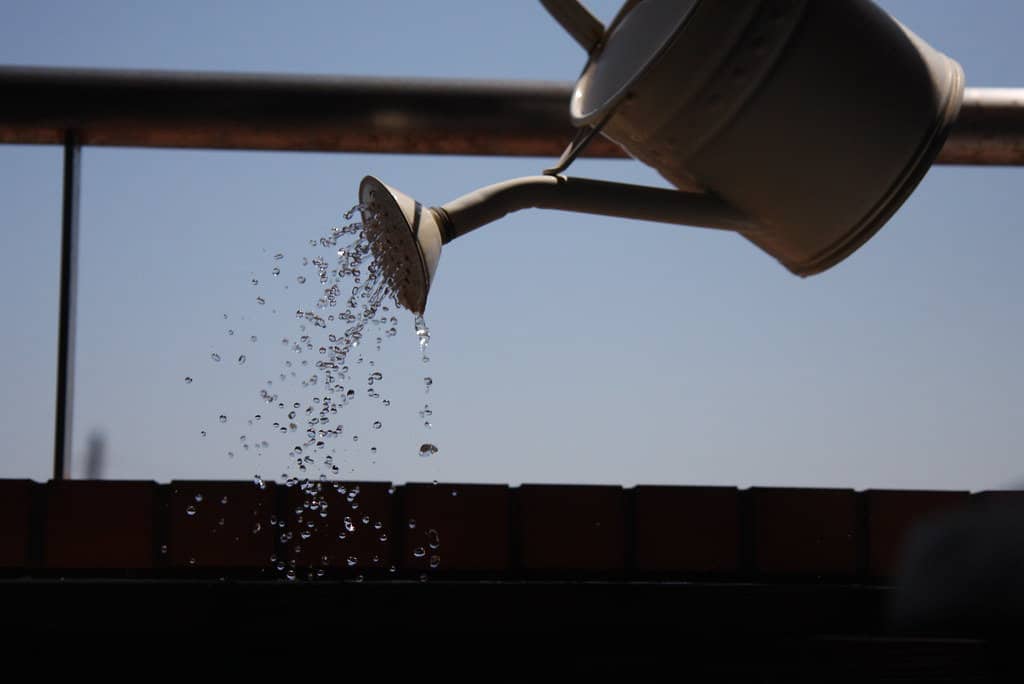Jump to:
One question that often sprouts in the minds of gardeners is, “How often should you water greenhouse plants?” Watering is the lifeblood of your botanical haven. And finding the right balance is key to thriving flora. So, in this guide, we’ll explore the nuanced factors influencing water frequency. Read on and decode the language of your plants through visual cues and unlock secrets to keep them thriving!
Factors Influencing Watering Frequency

Caring for greenhouse plants begins with knowing the factors that affect how often you should do so. Explore plant types, growth stages, and environmental details in this section.
Plant type
Plants display diverse water needs influenced by their individual characteristics. Understanding these distinctions is crucial for effective care. Broadly categorise plants based on their water requirements to streamline your approach. Succulents, for instance, prefer infrequent watering, thriving in well-draining soil. Conversely, leafy greens benefit from more consistent moisture.
Explore the details of each plant group. Understand the unique needs of orchids, cacti, and foliage plants, for instance. Customise watering for a healthy greenhouse where each plant gets the care it needs.
Stage of growth
Another factor is the evolving watering needs across distinct growth stages. In the initial seedling phase, young plants require consistent moisture. Such demands enable them to establish resilient root systems. As plants enter the vegetative stage, they focus on growing leaves and stems and need more water. When plants reach the flowering stage, careful watering aids the reproductive process.
This balanced hydration strategy ensures optimal nutrient absorption, fostering robust growth and flowering. Ultimately, it helps your greenhouse plants flourish during important phases.
Environmental conditions
Environmental conditions like temperature, humidity, and sunlight influence watering needs. In warmer temperatures, plants lose moisture faster, requiring more frequent watering. Low humidity speeds up water loss through transpiration. Sunlight affects photosynthesis and, consequently, water absorption.
Understanding these factors helps adjust watering practices to the current conditions. Overall, this ensures optimal hydration, growth, and resilience for greenhouse plants.
Signs of Underwatering and Overwatering

Spotting visual cues is crucial for keeping your greenhouse plants healthy. For underwatering, watch out for wilted, drooping leaves and dry, crumbly soil. Stunted growth and leaf yellowing are also indicators of insufficient water. On the flip side, overwatering manifests as yellowing leaves, root rot, and a foul odour. Excessive moisture may cause mould growth on the soil surface.
Regularly check the soil moisture by inserting your finger about an inch deep into the soil. If it feels dry, it’s time to water; if it’s consistently wet, you might be overdoing it. Consider investing in a moisture meter for more accurate readings. With these signals, you can identify signs of both underwatering and overwatering.
Best Practices for Watering Greenhouse Plants

Watering your greenhouse plants correctly is key to their overall health and vitality. Here are some best practices to ensure your plants receive the optimal care they deserve:
Morning watering
Begin your day by watering your greenhouse plants in the morning. This practice offers numerous benefits.
Morning watering allows plants to absorb moisture before the peak heat of the day. This ensures they are adequately hydrated and helps prevent issues like fungal growth. Watering in the morning also allows excess moisture to evaporate during the day. This reduces the risk of fungal diseases that thrive in damp conditions.
Aim to do so early, preferably between 6 am and 10 am. This time frame allows plants to absorb moisture before the day’s peak heat. Doing so also promotes efficient hydration and reduces the risk of fungal issues. Adopting this routine sets a positive tone for your plants, promoting their well-being.
Soil moisture monitoring
Accurate monitoring of soil moisture is essential for effective plant care. Guide yourself with precision by learning how to check soil moisture accurately. Use your fingertips to gauge soil moisture levels. Moist soil should feel slightly damp, not soggy or bone dry. Or use tools like moisture metres or DIY, such as inserting a stick into the soil to assess moisture depth.
A regular routine helps you adapt your watering schedule to the current conditions. It ensures your garden greenhouse plants get the right amount of water when they need it.
Proper watering techniques
Watering at the base of plants is crucial for efficient hydration. Direct water to the soil around the plant’s root zone promotes optimal absorption. This technique ensures that the roots receive moisture directly.
To achieve this, consider using watering cans, drip systems, or soaker hoses. Watering cans provide a controlled stream, allowing you to target the base accurately. Drip systems deliver a slow, steady flow directly to the soil, minimising wastage. Soaker hoses ensure water seeps gradually into the soil around the plants. These methods save water and keep your greenhouse plants healthy.
Customising Watering Frequency
Here’s a versatile watering schedule template for your greenhouse plants. Adjust the frequency based on your specific setup and plant needs. For instance, water more during hot periods and less in cooler seasons. Monitor soil moisture regularly and tweak as needed. Remember, the key is adapting to your unique conditions. Experiment to find the right balance for optimal plant health. Your greenhouse setup, climate, and plant types all influence watering requirements.
Be adaptable and watchful. That way, you can create a schedule that gives your plants the right amount of water for healthy growth!
Round-up
Successful greenhouse plant care revolves around adapting to your plants’ needs. Flexibility is also key, whether adjusting watering schedules or monitoring environmental factors. Stay attentive to visual cues and employ best practices so your plants will flourish. Remember, there’s no one-size-fits-all approach; your greenhouse setup is unique. Embrace this adaptability, and your plants will thank you with vibrant growth!
Looking for a versatile solution that serves as both a greenhouse and storage space? Look no further than our greenhouses. Explore Garden Buildings Direct for a diverse range of potting sheds for sale.










